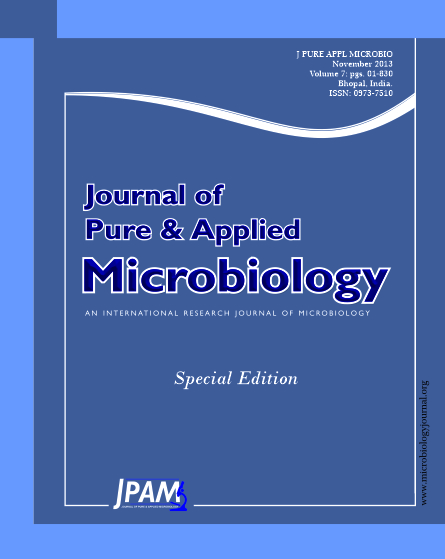Thirty newly isolated Xanthomonas-strains from different host were characterized by pathological, chemical and physiological tests.All strains were Gram-negative with short rods. Scanning electron microscopy showed that the newly isolated strains are polar-monoflagellated short rods.The bacteria were oxidase-negative, utilized glucose oxidatively and not fermentatively. All strains were able to hydrolyse starch and esculin. All of the strains tested grew on 0.02% TTC and were unable to grow on 0.1% TTC. Some of newly tested strains induced a typical hypersensitive reaction (HR) in tobacco leaves, but all the strains tested induced a typical HR in tomato leaves. Therefore, it is suggested to use tomato leaves instead of tobacco leaves for testing the HR inducing capability of Xanthomonas strains. The Rfvalues of TLC test and UV spectrophotometric analysis of newly tested strains pigments (xanthomonadin) were similar to those used as reference strains.
Xanthomonads, Xanthomonadin, Chemotaxonomic, HR test
© The Author(s) 2013. Open Access. This article is distributed under the terms of the Creative Commons Attribution 4.0 International License which permits unrestricted use, sharing, distribution, and reproduction in any medium, provided you give appropriate credit to the original author(s) and the source, provide a link to the Creative Commons license, and indicate if changes were made.


